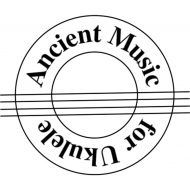Composers listed in alphabetical order by last name. All sources are Wikipedia.
Johann Sebastian Bach (1685 – 1750) was a German composer and musician of the Baroque period. He is known for instrumental compositions such as the Brandenburg Concertos and the Goldberg Variations as well as for vocal music such as the St Matthew Passion and the Mass in B minor. Bach enriched established German styles through his mastery of counterpoint, harmonic and motivic organisation, and his adaptation of rhythms, forms, and textures from abroad. Bach’s compositions include hundreds of cantatas, both sacred and secular. He composed Latin church music, Passions, oratorios, and motets. He wrote extensively for organ and for other keyboard instruments. He composed concertos, for instance for violin and for harpsichord, and suites, as chamber music as well as for orchestra. Many of his works employ the genres of canon and fugue. Throughout the 18th century Bach was mostly renowned as an organist, while his keyboard music, such as The Well-Tempered Clavier, was appreciated for its didactic qualities.
Wilhelm Friedmann Bach (1710 – 1784) was a German composer and performer, the second child and eldest son of Johann Sebastian Bach. Bach supervised Friedemann’s musical education and career with great attention and is documented in the Clavier-Büchlein vor Wilhelm Friedemann Bach. Friedemann was appointed in to the position of organist of the St. Sophia’s Church at Dresden and later as organist of the Liebfrauenkirche at Halle. Friedemann was deeply unhappy in Halle almost from the beginning of his tenure and eventually left the job in Halle without any employment secured elsewhere. Despite his acknowledged genius as an organist, improviser and composer, his income and employment were unstable and he died in poverty.
Carl Philipp Emmanuel Bach (1714 – 1788) was a German musician and composer, the fifth child and second (surviving) son of Johann Sebastian Bach. He was known as the “Berlin Bach” during his residence in that city in the service of Crown Prince Frederick of Prussia, and later as the “Hamburg Bach” when he succeeded Telemann, his godfather. In Berlin, he drew creative inspiration from Telemann, Handel, Graun and Haydn. He was interested in all types of art which led to influence from poets, playwrights and philosophers. In Hamburg, he began to turn more of his energies to ecclesiastical and choral music with the steady production of music for Protestant church services. He himself influenced the work of, among others, Haydn, Mozart, Beethoven and Felix Mendelssohn.
Johann Christoph Friedrich Bach (1732 – 1795) was a harpsichordist and composer, the fifth son of Johann Sebastian Bach, sometimes referred to as the “Bückeburg Bach”. Born in Leipzig, he was taught music by his father, and also tutored by his distant cousin Johann Elias Bach. In 1750, William, Count of Schaumburg-Lippe appointed him as harpsichordist at Bückeburg, and he became concertmaster. He wrote keyboard sonatas, symphonies, oratorios, liturgical choir pieces and motets, operas and songs. Because of Count Wilhelm’s predilection for Italian music, Bach had to adapt his style accordingly, but he retained stylistic traits of the music of his father and of his brother, C. P. E. Bach.
Christian Petzold (1677 – 1733) was a German composer and organist. He was active primarily in Dresden, and achieved a high reputation during his lifetime, but his surviving works are few. He is best remembered for a pair of minuets that were copied into the 1725 Notebook for Anna Magdalena Bach. One of these minuets, the Minuet in G major, achieved wide recognition, but for centuries was attributed to Johann Sebastian Bach. Petzold’s authorship was only established in the 1970s.
